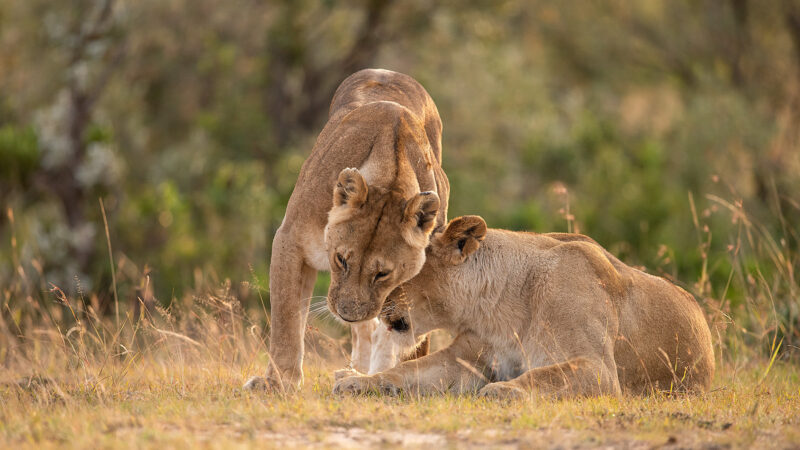The transition from Lake Manyara National Park to the Ngorongoro Conservation Area offers a fascinating shift in landscape and wildlife viewing experiences. Here’s an overview of what each area offers and how they connect:
Lake Manyara National Park:
- Location & Landscape: Situated at the base of the dramatic Great Rift Valley Escarpment, Lake Manyara is a relatively small but incredibly diverse park. It features a scenic alkaline lake, groundwater forests, acacia woodlands, grassy plains, and hot springs.
- Key Features:
- Soda Lake & Birdlife: The lake itself is a major draw, often teeming with thousands of pink flamingos and a vast array of other waterbirds (over 400 species recorded).
- Tree-Climbing Lions: While not always guaranteed, Manyara is famous for lions that have adapted to climbing trees, a unique behavior.
- Elephant Herds: The park is known for its healthy populations of elephants, often seen close to the lake and in the forests.
- Other Wildlife: Expect to see buffaloes, giraffes, zebras, wildebeest (especially during migration), hippos, baboons, and various antelope species.
- Compact Diversity: Its varied ecosystems in a relatively small area make for interesting and concentrated game drives.
- Activities: Game drives, bird watching, canoeing on the lake (seasonal), guided nature walks, and the Treetop Walkway offering a unique perspective of the forest canopy.
Ngorongoro Conservation Area:
- Unique Status: Unlike national parks, the Ngorongoro Conservation Area (NCA) is a multiple land-use area, where wildlife coexists with the semi-nomadic Maasai people and their livestock.
- Key Feature: The Ngorongoro Crater: The centerpiece is the Ngorongoro Crater, the world’s largest unbroken, unflooded volcanic caldera. This breathtaking natural wonder is a self-contained ecosystem teeming with wildlife.
- Crater Highlights:
- High Wildlife Density: The crater floor supports an incredibly high concentration of diverse animals year-round, including a significant population of black rhinos.
- “Big Five” Encounters: It offers perhaps the best chance in East Africa to see all members of the “Big Five” (lion, leopard, elephant, rhino, buffalo) in a single area.
- Predator Abundance: Lions, hyenas, and cheetahs are commonly seen, and leopard sightings are also frequent.
- Lake Magadi: A soda lake on the crater floor attracts flamingos and other waterbirds.
- No Giraffes: Interestingly, giraffes are generally absent from the crater floor due to the steep descent and lack of their preferred food source.
- Beyond the Crater: The NCA also encompasses vast highland plains, other volcanic craters (like Olmoti and Empakaai), the famous Olduvai Gorge (an important archaeological site), and diverse landscapes.
- Activities: Game drives (primarily within the crater), cultural visits to Maasai villages, guided walks in the highlands and around other craters, and exploring the archaeological sites.
The Transition:
Moving from Lake Manyara to the Ngorongoro Conservation Area involves ascending the Rift Valley Escarpment, offering stunning panoramic views of Lake Manyara below. The drive takes you through different vegetation zones and landscapes as you head towards the highlands surrounding the Ngorongoro Crater.
In Summary:
- Lake Manyara provides a gentler introduction to Tanzanian wildlife with its beautiful lake, diverse habitats, and unique tree-climbing lions. It’s excellent for birdwatching and offers a more intimate safari experience.
- The Ngorongoro Conservation Area, particularly the Crater, offers a dramatic and highly concentrated wildlife spectacle within a breathtaking geological wonder. It’s renowned for its high density of animals, including the endangered black rhino, and the unique coexistence of wildlife and the Maasai people.
Combining these two destinations on a safari provides a wonderful contrast and a rich tapestry of experiences, from the scenic shores of Lake Manyara to the awe-inspiring caldera of Ngorongoro.


